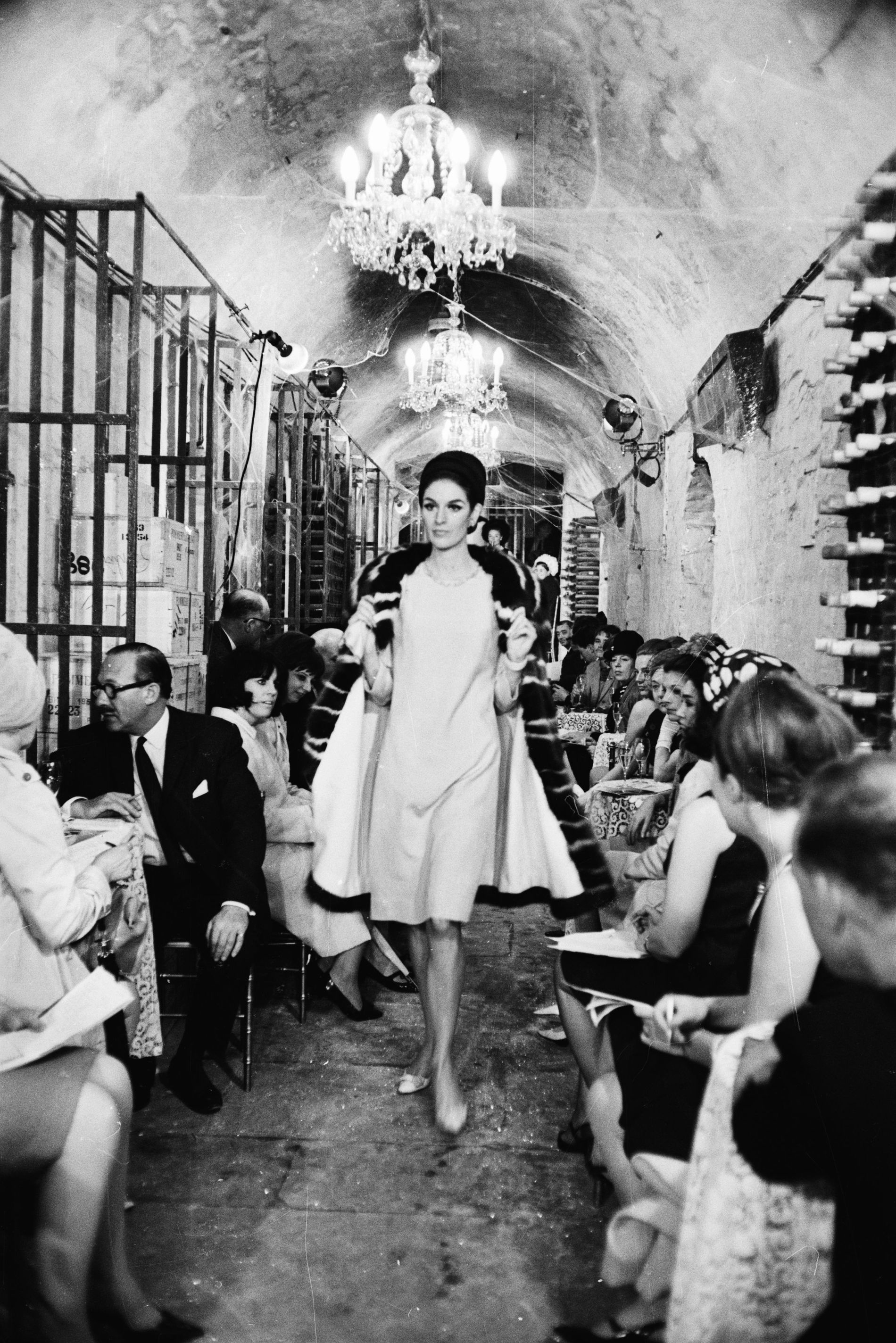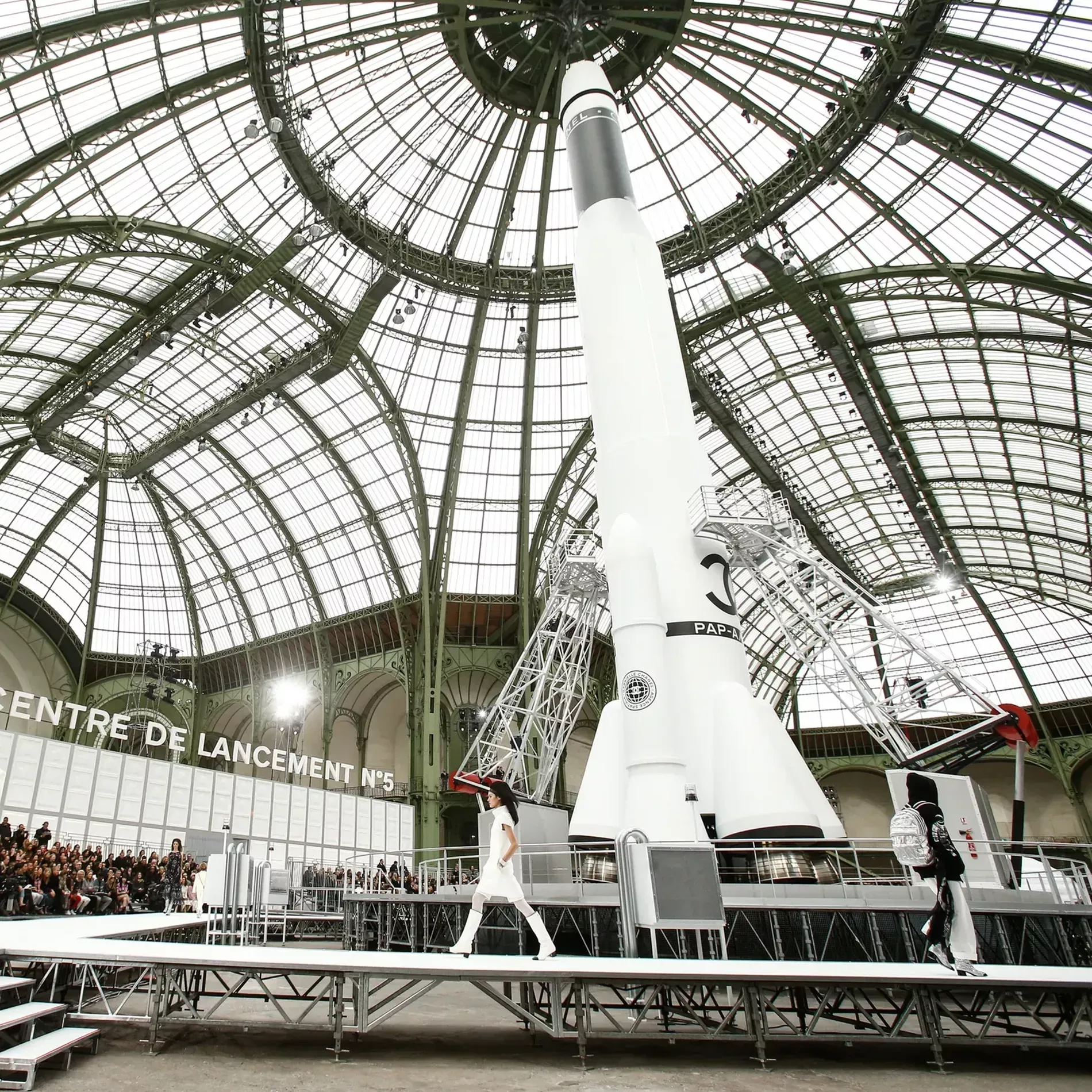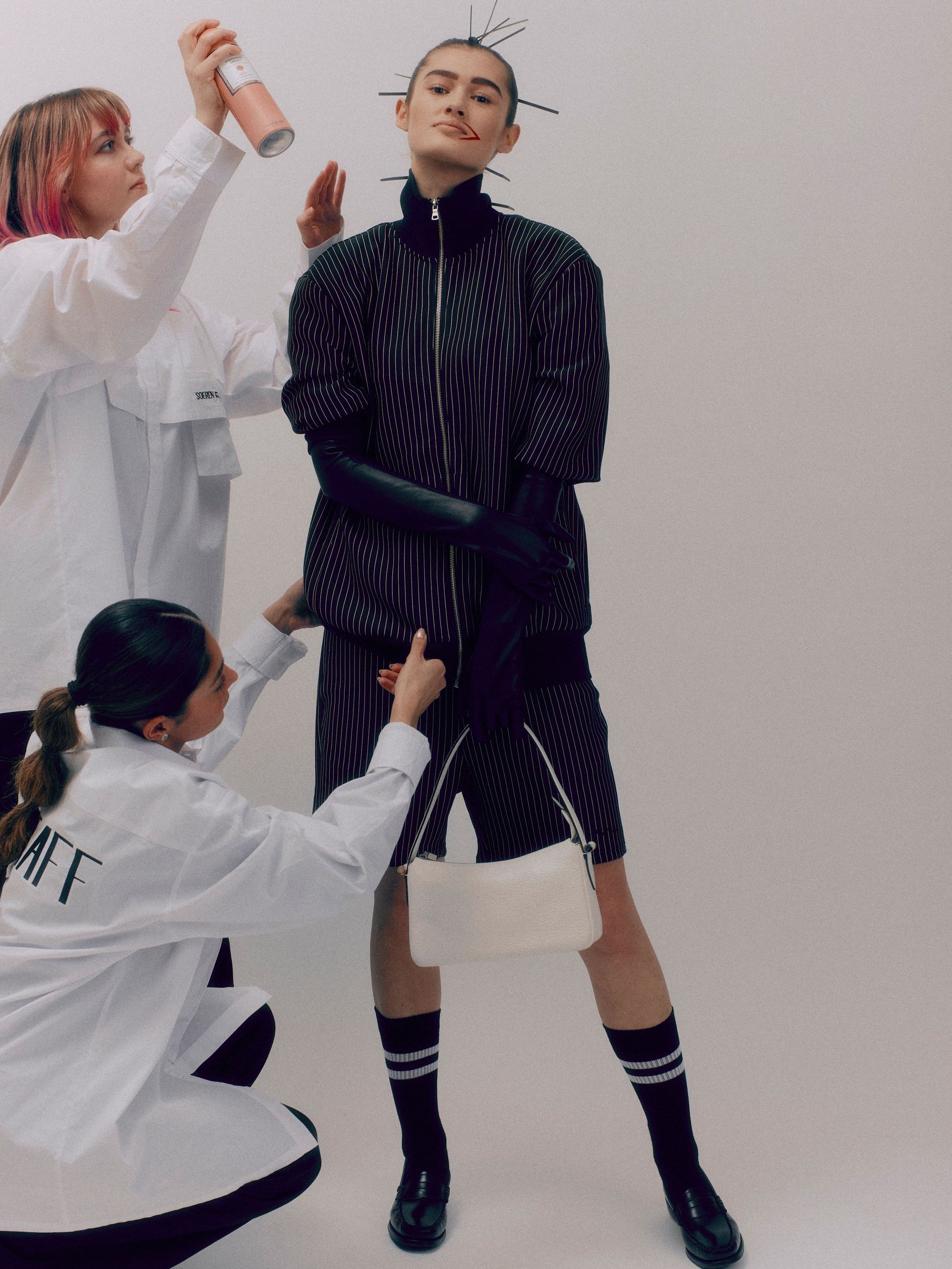From Heliot Emil's flaming final look to (Di)vision’s viral tablecloth moment and Bella Hadid's spray-down at Coperni: it seems fashion has reignited its flair for dramatics
Over the past couple of decades, the circus of the fashion week has transformed. Originally a schedule of exclusive events catered specifically to buyers, clients and press, it quickly became a cultural phenomenon. Models were made superstars in their own right (with Janice Dickinson supposedly coining the term ‘supermodel’ in 1979), front-row guests (the ‘frow,’ if you will) became A-list celebrities, and editors darted across the world to pen unimpeachable critiques.
Advertisement
With the growing interest, fashion shows came to be about more than clothes. How they were presented helped to powerfully portray a concept, and designers took to theatrics in a bid for the public’s attention.
The first significant shift towards theatrical shows came about in the 1960s when designers started to break away from the rigid spaces of department stores and salons. Exploring new locations and settings, designers began to be more inventive. Balmain, for example, presented a 1965 collection in a wine cellar, while Paco Rabanne staged his space-age fashion at the iconic cabaret venue Crazy Horse Paris. Each new location and season presented the designers with a newfound challenge.

A model walks for Balmain's 1965 show, hosted in a wine cellar. Photo: Getty
In the 1970s, the (arguably) first supershow occurred. More than 700 guests flocked to France to see the ‘Battle of Versailles’ in 1973. A fundraiser for the restoration of the palace, the spectacular show pitted Parisian designers like Yves Saint Laurent and Christian Dior against American designers such as Oscar de la Renta.
In the 1980s, interpretations of a fashion show shifted again. Thierry Mugler was the first designer to give the French public access to a fashion show with his 10th anniversary fall/winter 1984 collection, selling tickets to a paying audience of 6,000. Held at the Zénith in Paris, the very first democratised fashion show saw a model dressed to resemble an angel suspended in the air above glass spires.
Towards the end of the 1990s, fashion shows exploded into more fearless experimentation, hand-in-hand with the digitalisation of media.

Shalom Harlow twirls on the runway during Alexander McQueen's unforgettable spring/summer 1999 spray-paint stunt. Photo: Vogue Runway

Photo: Vogue Runway

Photo: Vogue Runway
One of the most game-changing moments etched into fashion history was Alexander McQueen’s spring/summer 1999 show at London Fashion Week. Exploring the meeting point of machinery and technology with traditional arts, models walked down the runway wearing tutu-like skirts and high-necked, sculpted gowns paired with modern corsetry and flowing ruffles.
Finally, wearing a voluminous white dress – layers of tulle underlay fastened around the bust with a beige belt – supermodel Shalom Harlow spun as a pair of robot arms spray painted the virginal dress with intersecting streaks of black and yellow.
It was a viral moment in fashion, predating social media frenzy.

The runway becomes a chessboard for Alexander McQueen’s spring/summer 1999 show at London Fashion Week. Photo: Getty
McQueen kept pushing the boundaries of the runway format. A master showman, he once said, “I know I’m provocative. You don’t have to like it, but you have to acknowledge it.” For the spring/summer 2005 collection, McQueen stayed true to his word by commissioning giant chessboard staging. On it, each model acted as a human chess piece, dressed in looks that nodded to the designer’s greatest runway moments.
Yet few designers had more of a penchant for fashion show production than Karl Lagerfeld. In October 2007, Karl Lagerfeld made history by staging a Fendi show on the Great Wall of China. But it is his work at Chanel that truly earned him the moniker 'Kaiser Karl’.
During his time at the ineffable French Maison, he produced some of the most transformative, sensorial experiences. As social media was on the rise, each of his full-blown fashion spectacles made their way onto the internet. And as a result, Lagerfeld is arguably responsible for our rewired runway expectations.

Karl Lagerfeld imported an ice block from Scandinavia to create the frozen backdrop for his 2010 show.

Chanel filled the Palais with fresh produce for its supermarket show.
From transforming the Grand Palais into a frozen tundra (importing a nine-metre tall iceberg from Scandinavia in 2010) to building a fully-functioning Chanel supermarket (complete with CC-monogrammed food items, fresh produce and shopping baskets) and a CC-bedazzled spaceship, Karl Lagerfeld truly elevated the craft of a theatrical catwalk.
But he was an outlier in a time when other brands opted for more modest displays. With our world harrowed by two recessions in as many decades and a pandemic, fashion as a whole has relied on simplicity in lieu of costly stunts.
That is, until the most recent seasons, when the internet and the fashion industry again found themselves in raptures. At Coperni’s spring/summer 2023 show, we witnessed Bella Hadid spray painted by two men in black, using a two-decade old material known as ‘Fabrican’. It had the crowd recalling that momentous McQueen show 25 years earlier.

The rocket Karl Lagerfeld launched during Chanel's 2017 runway show.

Chanel transported the Palais into an airport for its 2016 runway show .
And just like McQueen's original show seemed to set off a domino effect in the rest of the industry, Coperni’s almost scientific stunt has had similar ramifications.
Few sartorial savants could have missed (Di)vision's viral tablecloth gown at Copenhagen Fashion Week. The theme for the brand’s autumn/winter 2023 collection was 'Dressed for Disaster', culminating in the show’s finale. Standing up from her seat at one of the purposefully dishevelled formal gala table settings, a model dragged the wine-stained tablecloth (which was connected to her skirt) with her. A ruckus of smashing plates and glasses ensued, oysters, cigarette butts and white card invitations crashing to the ground, leaving show-goers shell-shocked by the evening’s plot twist.
And while it was the most viral stunt to emerge from the autumn/winter 2023 season in the Danish capital, it wasn’t the only one.

The final model's look at (Di)vision autumn/winter 2023's show was attached to a tablecloth. Photo: James Cochrane

A. Roege Hove's autumn/winter 2023 show featured live draping. Photo: James Cochrane
A. Roege Hove hosted its show in the black box of a Copenhagen theatre. Echoing the Coperni approach, two attendants opened the show by draping a model – dressed in nothing but underwear and leather boots – in the brand’s signature sheer knits.
Then there was Søren Le Schmidt, who defied tradition by inviting guests backstage to watch the models get made up. “Everyone always wants to go backstage at a show to experience the nerves, the stress and, not least, the joy associated with it,” namesake founder Le Schmidt told me ahead of the event. “So I thought, why settle for having your entire team backstage and not invite all the guests to join in experiencing all the chaos and joy associated with a big runway show.”
Just now, in Paris, buzzy Danish brand Heliot Emil sent a flaming model down the runway causing quite the stir online.

Backstage at the Søren Le Schmidt autumn/winter 2023 show. Photo: Jannick Børlum

Backstage at the Søren Le Schmidt autumn/winter 2023 show. Photo: Jannick Børlum
Looking at history, it is unfair to claim that theatrics on the runway ever truly went away. Yes, the '90s and '00s saw a decline in fantastical fashion shows (with the exception of the late greats), and we veered towards austerity.
But in the '20s, something happened. Just like how Balenciaga and Paco Rabanne had to adapt to their new venues, the pandemic challenged our contemporaries to create head-turning content to capture their audience. Take Balenciaga’s muddied spring/summer 2023 runway or Valentino’s all-pink collection as examples.
As we are still emerging from small-scale shows and digital activations, a hunger for the theatrical is only natural, and we can’t wait to see what’s next.